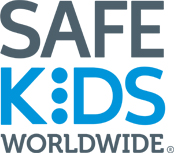You are here
Drowning Happens Fast, and No Single Prevention Strategy Is Enough.
Drowning Happens Fast, and No Single Prevention Strategy Is Enough. Safe Kids Emphasizes ‘Layers of Protection’
Statement by Torine Creppy, President of Safe Kids Worldwide
May 22, 2025
We are heartbroken to learn of the May 18 drowning death of 3-year-old Trigg Kiser, the son of social media influencer Emilie Kiser, who was pulled unconscious six days earlier from the family's backyard pool.
Tragically, drowning events occur all too often across the U.S. More children ages 1-4 die from drowning than any other cause, and 66% of all fatal drownings occur between May and August.
While we extend our deepest condolences to those impacted by this tragic loss, we want to remind all parents and caregivers that drowning happens quickly and quietly, and no single prevention strategy is enough. We therefore recommend layers of protection to keep kids safe in and around the water.
Here are our top tips:
Barriers and alarms: To prevent unsupervised access, it’s important to use 4-sided pool fencing with a self-latching, self-locking gate, pool safety covers, and alarms.
Supervision: Watch kids when they are in and around water, without being distracted. Keep young children and non-swimmers within arm's reach of an adult at all times. Use an age- and weight-appropriate USCG-approved life jacket to protect young children and non-swimmers when you are around but are not expecting to be in the water. Designate an adult Water Watcher to watch children in or near the water for a certain amount of time. Adults can take turns with this assigned responsibility. A water watcher card can be downloaded at: www.safekids.org/other-resource/water-watcher-card
Swimming ability: Make sure children learn how to swim, including the 5 water survival skills so they are able to: step or jump into the water over their heads and return to the surface; turn around and orient to safety; float or tread water; combine breathing with forward movement in the water; exit the water. Every child is different, so enroll them in swim lessons when ready. Consider their age, development, and how often they are around water when deciding if they are ready. Parents who don’t know how to swim should also consider taking lessons.
Emergency Preparation: Knowing how to prepare for an emergency with CPR training with rescue breaths and basic water rescue skills can make the difference between life and death. Have a phone available and ready to call 911.
